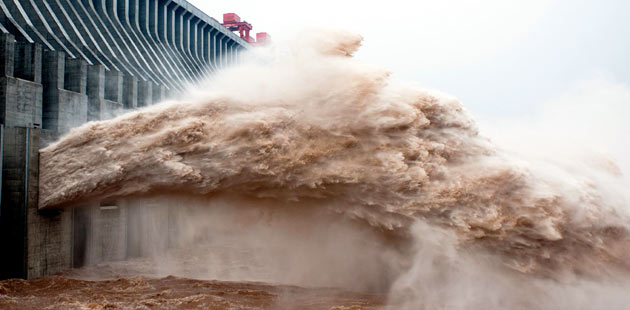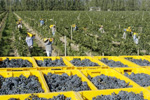Skyscraper fervor causes concerns
Updated: 2012-09-03 14:50
(Xinhua)
|
||||||||
BEIJING -- Clusters of skyscrapers are elevating the urban skyline in many Chinese cities. However, recent reports of a craze to build more of them have sparked concerns of inadvisable investment.
Beijing's current tallest building -- the China World Trade Center Tower 3, which is 330 meters in height, will be dwarfed in 2016 by the nearby "China Zun," which is being developed by the CITIC Group.
The design of the 528-meter China Zun was inspired by a kind of ancient Chinese wine vessel, and investment in the project is to reach 24 billion yuan ($3.78 billion), according to the group.
China Zun is only an epitome of the increasing number of skyscrapers shooting up across Chinese cities under the fervor for high-rises in recent years.
The southwestern city of Chongqing is pumping a total investment of 10 billion yuan into developing the 470-meter-tall Chongqing International Financial Center.
Shenzhen in south China's Guangdong Province will embrace its 660-meter Ping'an International Financial Center in two years, the result of a total investment of 9 billion yuan.
The 580-meter-tall Shanghai Center will beat the 492 meters of the Shanghai World Financial Center in the future as the tallest building in the city.
To make all these projects pale in comparison, it has been reported that next June Changsha, capital of central China's Hunan Province, will start using just seven months to construct a building that will be 10 meters higher than the 828-meter Burj Khalifa Tower in Dubai, the world's tallest building.
Buildings higher than 152 meters are regarded as skyscrapers. Among the 10 tallest buildings completed, four are located in the Chinese mainland.
Figures released by skyscraper-observing website motiancity.com show that as of March 2011, the Chinese mainland has built 350 skyscrapers higher than 152 meters, outstripping the number in the United States. The country then was building another 287 high-rises, and planned to construct more than 400 skyscrapers in the future.
But low occupancy is a potential risk developers have to consider, warned He Jingtang, an academic with the Chinese Academy of Engineering.
Property market adviser Jones Lang LaSalle has pointed out that cooled economic expansion dampened demand for high-end office buildings in Beijing in the first half of the year.
At the same time, rent for high-end office buildings in the Chinese capital surged 50 percent in the second quarter of 2012, according to property market advisory DTZ Debenham Tie Leung Limited. Rent spikes are likely to keep small or medium-sized companies away.
Hung-Ming Lin, board chairman and general manager of Taipei 101, the second-tallest building completed in the world, said it takes a very long time before developers can make profits from skyscrapers.
"Developers will suffer from a strained money supply," Lin added.
Running skyscrapers is also costly. It is estimated that management expenditure on the 420.5-meter-tall Shanghai Jinmao Tower reaches 1 million yuan each day.
Architect Lin Xianguang warned that fire is the most serious threat to tall buildings.
A fire brigade official in Beijing confirmed that rescue work in fire disasters in high-rises is a difficult problem globally. As scaling ladders normally reach a maximum of 100 meters, they aren't much used if fires occur in taller buildings.
"We need helicopters for rescue work in that case," said the official, who wished to remain anonymous, adding that there are few fire brigades in China equipped for such flight.
Zhou Xuewang, who is in charge of the China branch of US architectural design firm SOM, said many developers started construction without sufficient planning before breaking ground.
According to Zhou, the craze for building high-rises stems from local authorities' image-making and need to promulgate political achievements.
Whether these skyscrapers will be sustainable is subject to doubt, Zhou added.











